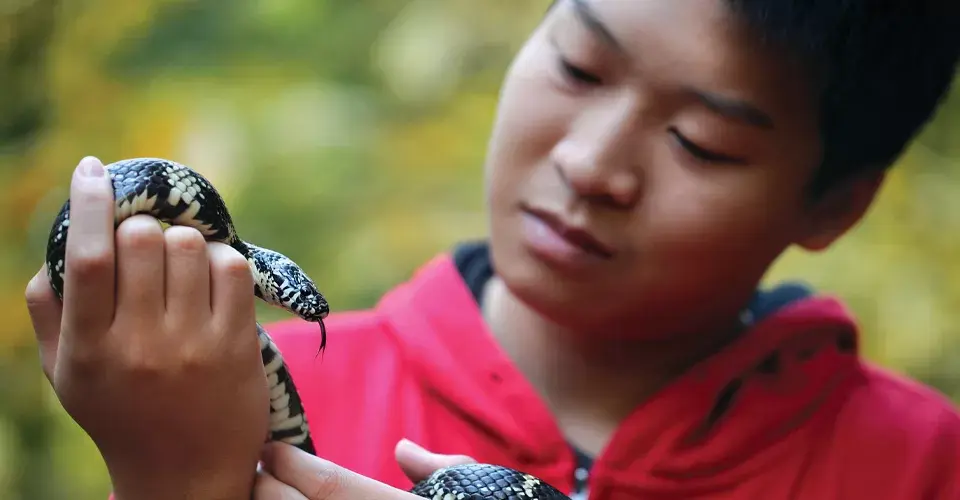Scales of Success
Undergrad Specializes in Reptilian Discovery
by Chris Carroll | Photo by John T. ConsoliThey sank their fangs into Justin Lee when he was only 2. It was on a trip to the Central Park Zoo, when he spied the snakes slithering behind the glass and was entranced. By 4, the Discovery Network’s reptile shows had become must-see TV. And at 7, he couldn’t just pronounce “herpetologist”—he was declaring his career plans to study reptiles and amphibians.
Lee is too modest to claim that title just yet, but he’s earned it. By the time he graduates in May, he’ll have published at least 13 scientific journal articles, including eight as the first author—a striking tally for someone yet to earn a degree.
One of his latest research papers describes three species of gecko from Myanmar. Two are new to science, and all of them belong to a genus that had never been recorded on mainland Myanmar.
“It’s common for scientists to discover new species or find species that have been known in other areas but never seen in Myanmar before,” he says. “But finding a whole genus, which is a higher taxonomic rank, is a lot more significant.”
Lee publishes frequently as an intern at the Smithsonian’s National Museum of Natural History, where he started working in the summer after his sophomore year of high school—and a big part of his decision to attend the University of Maryland lay in its proximity to Washington, D.C., and the Smithsonian, as well as a chance to participate in the College Park Scholars living-learning program.
The species he described were brought back by Smithsonian herpetologist Daniel Mulcahy, who’s learned to trust Lee’s identification skills.
“When we’re collecting, we just put our quick identification on specimens knowing that we’re going to compare them with species descriptions in the literature and molecular studies in the lab back home,” Mulcahy says. “Often, Justin has changed an identification based on his evaluation, and it turns out, when I sequence it in the molecular lab, he’s right.”
In addition to his lab work, Lee is an avid practitioner of “field herping”—searching for reptiles and amphibians in the wild—and has conducted surveys for the Maryland-National Capital Park and Planning Commission.
Lee’s childish enthusiasm has ebbed somewhat—he tells the story of the fateful Christmas when his mom finally let him have a pet snake, only to have it escape as extended family were arriving for the holiday—but his scholarly interest in the behavior, morphology, biogenetics and the evolution of snakes and their cousins has never been stronger.
“If my brain were wired differently, maybe it would be insects or birds,” he says. “But I can’t remember a time I didn’t want to know everything about snakes.”
0 Comments
Leave a Reply
* indicates a required field

